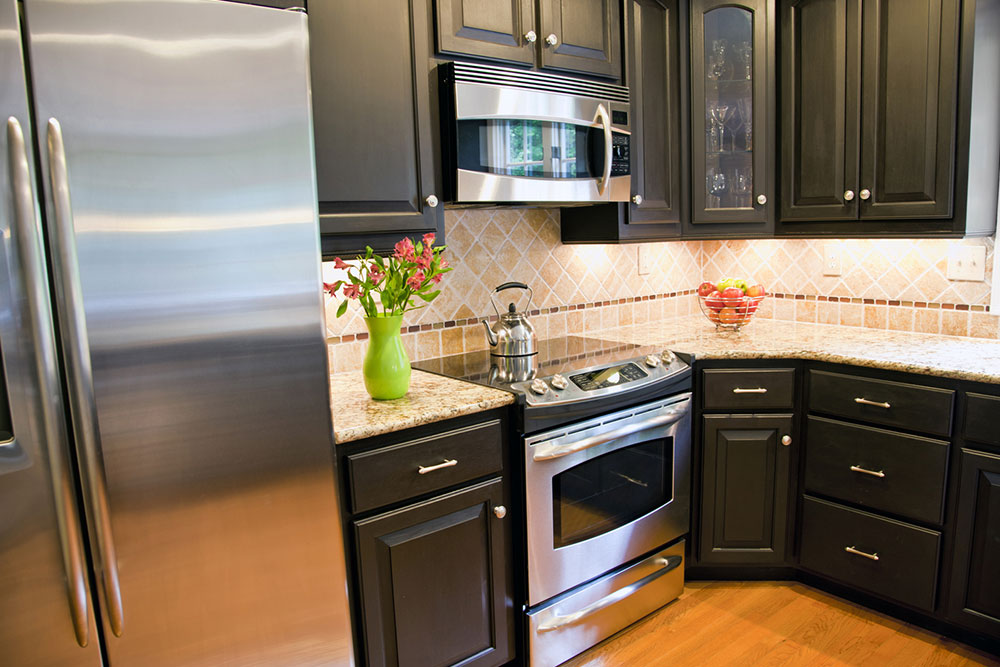
5 home appliance improvement projects that offer a high ROI
Home renovation is costly. Whether one wishes to repair the roofing or revamp certain amenities in the garden/patio, the prices keep increasing as years go by. Appliances are perhaps the most expensive to upgrade, considering one would have to change their furnaces, refrigerators, boilers, and other expensive systems. Even after doing that, the return on investment (ROI) may be low. That’s why individuals should think twice and choose the right home appliance improvement projects.
Upgrading the smart home security system
These days, the market has several smart home devices, such as outdoor facial recognition systems, floodlight cameras, home automation systems, and video doorbells. These devices are chiefly responsible for protecting the valuables stored in one’s home. Some smart systems can even be controlled remotely using a smartphone app. But while a smart home has several benefits, it must be upgraded regularly to keep up with the advancing technology. Individual devices must also be repaired when they break down or stop working to ensure they continue to do the job. When people repair or upgrade smart systems, they ensure their valuables and homes are safe.
Improving the heating and cooling systems
Heating and cooling systems typically use more energy and drive up utility costs more than other home devices. This is why many people consider saving money by installing a basic HVAC (heating, ventilation, and cooling) system, which is a big mistake. Instead of saving on an HVAC, one should consider installing a good system or upgrading the current one. Doing so can maintain a comfortable temperature, improve indoor air quality, and provide several other benefits.
The cost of a new HVAC system will vary depending on whether one chooses a central or furnace-fueled system. If a central unit cannot be installed, homeowners can consider smart fans, smart blinds, or smart humidifiers. These tiny tweaks will improve a house’s heating and air conditioning and make it more appealing to stay in. Those who already have an HVAC and want to improve it can consider adding smart home thermostats. They can also enable remote operation to better control airflow, set HVAC schedules, and change settings with the touch of a button.
Adding automated blinds and curtains
Privacy and security are two of the most vital aspects of homes. A safe home away from prying eyes demands a huge price in the real estate market. That’s why many spend hundreds of dollars to bolster privacy and safety. One way to achieve this goal is to invest in automated curtains and blinds. Such curtains and blinds use smart technology and can be operated with a remote or voice command. That means one can open or close them while in bed or seated away from the window. Homeowners can add this unique and increasingly popular feature to their homes to make them more appealing to others. Homebuyers tend to be delighted when they see smart security-based appliances like automated windows, screens, and curtains in a new, up-for-sale home.
Installing smart lights
Lighting appliances and electrical systems are quintessential for every home. After all, poorly lit homes just do not have the same draw as a home in which every area is illuminated perfectly. Smart lighting installations and improvements can be added both inside and outside the property. These days, LED lights have become popular because they are very energy-efficient and convenient. They also boost the appearance of any home and increase its value by several thousand dollars. Besides LEDs, homebuyers find automatic remote-based lights very attractive. These lights can be regulated remotely through one’s smartphone, even if the homeowner is miles away. It is very appealing and worth paying the extra cash for. All in all, if a homeowner wishes to instantly skyrocket the value of their home for prospective buyers, improving on/installing smart lighting systems is a good place to begin.
Switching to energy-efficient appliances
Most homes have dishwashers, ovens, microwaves, clothes washers, dryers, HVAC systems, furnaces, boilers, refrigerators, and stand-alone freezers. These appliances are generally considered the heart and soul of homes as they help keep things running smoothly. But the problem is that they consume too much energy. So, installing or replacing these appliances with energy-efficient models is a good idea. Homeowners may initially balk at the sheer price of these appliances, but as time passes, one will realize that they help lower utility bills. Individuals should read the labels and ratings when buying new appliances to know how energy-saving they are.
Besides upgrading home appliances, one can consider getting a home warranty plan. This plan provides a good return on investment because it protects the home’s appliances and systems in case they get damaged. According to past estimates, home warranty plans could provide an ROI of up to 600%. Many homeowners agree to buy a home warranty protection plan when they put up their houses for sale. This is done to get free listing coverage and to ensure some much-needed peace of mind for buyers. Many homebuyers eagerly await homes covered by a home warranty protection plan because it ensures that if any old appliances break down, their repairs or replacements will happen in exchange for a small service call fee.


